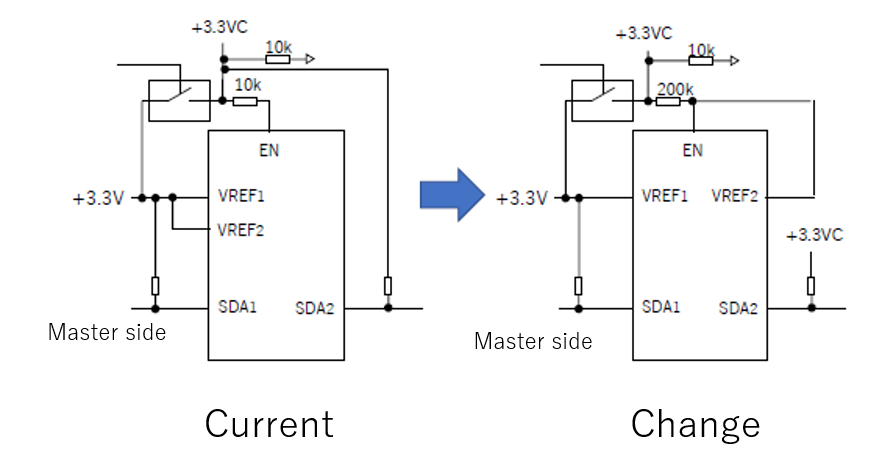Hello team,
My customer has reported that some PCA9306s seem to get damaged(resistance between SCL1(and/or SDA1) and GND is about hundreds ohm) and don't work.
Please see below left side for current PCA9306 connection. Customer uses same voltage to Vref1 and Vref2(not level translation).
Do you think a cause of the damage is due to Vref2 connection not having 200kohm resistance?
Currently customer tries to modify the circuit to close to datasheet figure10.
Do you think above right side connection is better than current connection? or please let me know if there is other better connection.
By the way, pull up resistor for SCL1 and SDA1 is not on the PCA9306 board but on only I2C master side board. Should we place the resistor also in PCA9306 board?
Best regards,


